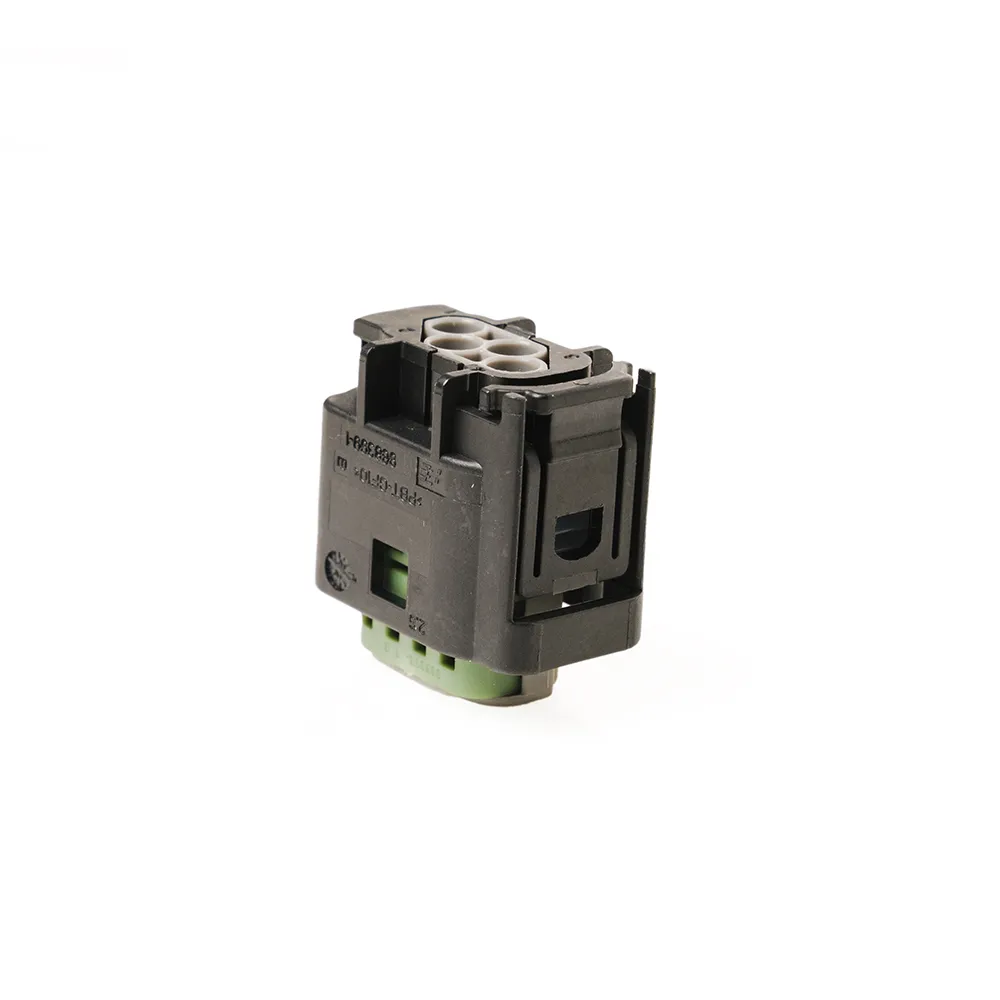Main materials and characteristics commonly used in automotive connectors
The material selection of automotive connectors directly affects the performance and reliability of connectors. Commonly used automotive connector materials mainly include two categories: engineering plastics and metal materials.
In terms of engineering plastics, PBT, LCP, PA66, etc. are commonly used. These materials have excellent mechanical strength, dimensional stability, high temperature resistance and other characteristics, and can meet the requirements of the harsh working environment of automobiles.
Metal materials are mainly used for connector contacts and shells. Commonly used are copper alloys, stainless steel, etc. Copper alloys have good conductivity and excellent processing performance. Stainless steel has excellent mechanical strength and corrosion resistance.
In addition, in order to improve contact reliability, precious metal plating such as gold and silver is often used on the surface of contacts. Gold plating has excellent conductivity and corrosion resistance, while silver plating has both conductivity and lubricity.
What are the specific advantages and disadvantages of PBT materials
PBT is one of the commonly used materials for automotive connector insulators. Its advantages include:
- High mechanical strength, good rigidity, and strong wear resistance.
- Good dimensional stability, thermal expansion and contraction.
- Excellent high temperature resistance, long-term use temperature can reach above 120°C.
- Good chemical resistance, can withstand corrosion from a variety of chemical media.
The main disadvantages of PBT are:
- High hygroscopicity, which will reduce mechanical and electrical properties after moisture absorption. Dehumidification treatment is required during use.
- The cost is relatively high, but lower than PA66.
- High brittleness and poor impact resistance, which is more obvious at low temperatures.

What are the factors that cause the high cost of LCP materials
LCP is a high-performance thermoplastic liquid crystal polymer with excellent comprehensive properties, but the cost is relatively high. The main reasons for the high cost of LCP materials include:
- The synthesis process is complex and the raw material cost is high. LCP is an aromatic copolymer composed of rigid links and flexible links. The synthesis process requires multi-step reactions, and the raw materials are mostly expensive aromatic monomers.
- The processing is difficult and the equipment requirements are high. LCP has low melt viscosity and high linearity, and is prone to melt instability and anisotropy during molding. Therefore, the requirements for injection molding machines and molds are very high.
- The market demand is relatively small and the scale of production is low. LCP is mainly used in the field of high-end electronic appliances, and the market demand is not as good as general plastics. The lack of scale effect also leads to high costs.
- High patent barriers and insufficient competition. At present, LCP materials on the market are mostly monopolized by several large foreign companies. Patent protection restricts the entry of other manufacturers. Insufficient competition is also one of the reasons for the high prices.
How is ABS material used in automotive connectors
ABS is an engineering plastic with high strength, good toughness and excellent dimensional stability. It is widely used in the automotive field, but its application in automotive connectors is relatively small. The main reasons include:
- ABS has poor high temperature resistance, and the long-term use temperature is generally below 80°C, which cannot meet the requirements of high temperature environments such as engine compartments.
- ABS has high hygroscopicity, which will cause dimensional changes and mechanical properties to decline after moisture absorption, affecting connection reliability.
- ABS’s chemical resistance is not as good as engineering plastics such as PBT and PA66, and long-term contact with oil may cause cracking.
However, ABS can still find some applications in low-temperature and low-load automotive connectors. For example, lighting fixture connectors and multimedia connectors in the car mainly utilize the high strength and toughness, good fluidity and excellent formability of ABS. In addition, ABS is also often used as the material of the connector shell to play a protective role.
Advantages of using gold and silver materials in connectors
Gold and silver are commonly used precious metal coating materials on the surface of connector contacts, which have many advantages:
- Both gold and silver have excellent conductivity and can effectively reduce contact resistance. The conductivity of gold is second only to silver and copper.
- Gold and silver have very good chemical stability and excellent corrosion resistance. Gold basically does not react chemically with other substances. Although silver has a certain tendency to oxidize and sulfide, the corrosion rate is very slow.
- Both gold and silver are very soft and have low hardness, which is conducive to forming more contact points and improving contact reliability.
- Silver has excellent lubricity and can reduce the insertion and removal force and wear of contacts.
- Both gold and silver have good solderability, which is conducive to improving the assembly efficiency and reliability of connectors.
In general, gold is widely used in high-end connectors due to its excellent conductivity, corrosion resistance and reliable contact performance, especially in occasions with high signal transmission requirements. Silver is also widely used because of its relatively low cost and its conductivity and lubricity. The existence of gold and silver coatings is the key to the stable and reliable signal transmission of connectors.

